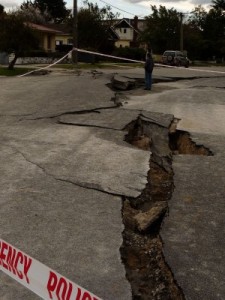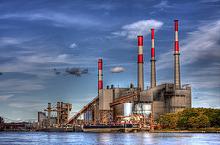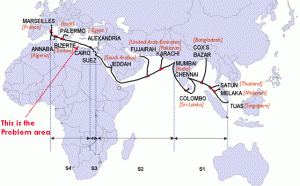New Zealand’s latest budget shows a government facing up to harsh economic realities at a time when it is dealing with the aftermath of one of the country’s worst natural disasters.
The budget deficit has hit a record high of NZ$16.7bn ($13.2bn, £8.2bn), or around 8.4% of gross domestic product (GDP). At the same time, the government is going to have to find an estimated $6.7bn to finance reconstruction after the earthquake.
The cost is actually higher than Japan’s earthquake bill when measured as a proportion of GDP.
However, despite natural disasters and trading disruptions, the government is trying hard to get its finances in order. This is in stark contrast to talk in the northern hemisphere which is dominated by increasing debt limits, European bailouts and the printing of money.
Government debt
 Budget deficits are financed by government debt. Large deficits – when obligations are larger than government revenue – usually require government debt to rise. The problem is when the debt gets too large. New Zealand’s government debt as a proportion of GDP was 16.7% at the end of 2010It is expected to rise to around 20-25% over the next year. US government debt on the same measure is expected to rise above 100% this year so New Zealand’s position is not problematic in a global context. But the extra burden to New Zealand increases government borrowings and raises doubts among some about the speed of repayment on loans. New Zealand does not benefit from record high commodity prices like Australia. Its export mix is more exposed to agricultural products. Its major source of income – tourism – is also affected by the disaster. The sector employs just fewer than 10% of the population.
Budget deficits are financed by government debt. Large deficits – when obligations are larger than government revenue – usually require government debt to rise. The problem is when the debt gets too large. New Zealand’s government debt as a proportion of GDP was 16.7% at the end of 2010It is expected to rise to around 20-25% over the next year. US government debt on the same measure is expected to rise above 100% this year so New Zealand’s position is not problematic in a global context. But the extra burden to New Zealand increases government borrowings and raises doubts among some about the speed of repayment on loans. New Zealand does not benefit from record high commodity prices like Australia. Its export mix is more exposed to agricultural products. Its major source of income – tourism – is also affected by the disaster. The sector employs just fewer than 10% of the population.
Debt commitments
 Australia’s budget last week re-affirmed a pre-election commitment to return into surplus by 2012-13, which should reduce the level of government borrowing. Next-door neighbour New Zealand faces a much tougher position, although its commitment to rein in spending and eventually pay-off its government borrowings is in tune with Australia. Funding the government’s commitments should continue unchanged unless credit agencies downgrade their ratings – a key part in determining funding costs. New Zealand has maintained its AA+ credit rating since 1996, just one level below Australia’s. But its outlook was downgraded to negative following February’s Christchurch earthquake on fears it will find it hard to meet its rising debt commitments.Further downgrade is unlikely.
Australia’s budget last week re-affirmed a pre-election commitment to return into surplus by 2012-13, which should reduce the level of government borrowing. Next-door neighbour New Zealand faces a much tougher position, although its commitment to rein in spending and eventually pay-off its government borrowings is in tune with Australia. Funding the government’s commitments should continue unchanged unless credit agencies downgrade their ratings – a key part in determining funding costs. New Zealand has maintained its AA+ credit rating since 1996, just one level below Australia’s. But its outlook was downgraded to negative following February’s Christchurch earthquake on fears it will find it hard to meet its rising debt commitments.Further downgrade is unlikely.
The negative outlook might even be revised to stable if the budget shows a better-than-expected set of numbers.Today’s budget is important in determining New Zealand’s ability to meet near term requirements and highlights Prime Minister John Key’s plan to repay debt.
Despite being in an election year, spending will target only essential areas. There will be cuts to certain areas, like family entitlements, changes to investment-scheme benefits and social-welfare payments in the hope of redirected money to reconstruction efforts.
Brighter outlook
The financial cost of the earthquake follows several recessions in what has been a very tough decade. Rebuilding is costly but it generates growth, spending and jobs. Tourism will recover and its position as a food basket to a quickly developing Asian region is strategically attractive.
The IMF estimates New Zealand’s 2012 GDP growth at around 4%. This compares with Australia at 3.5%, the USA at 2.9% and Germany at 2.1%. With that in mind and a possible budget surplus by 2016, the next decade could be a lot brighter for New Zealand.
Author : Peter Esho, BBC, ASIA PACIFIC





































